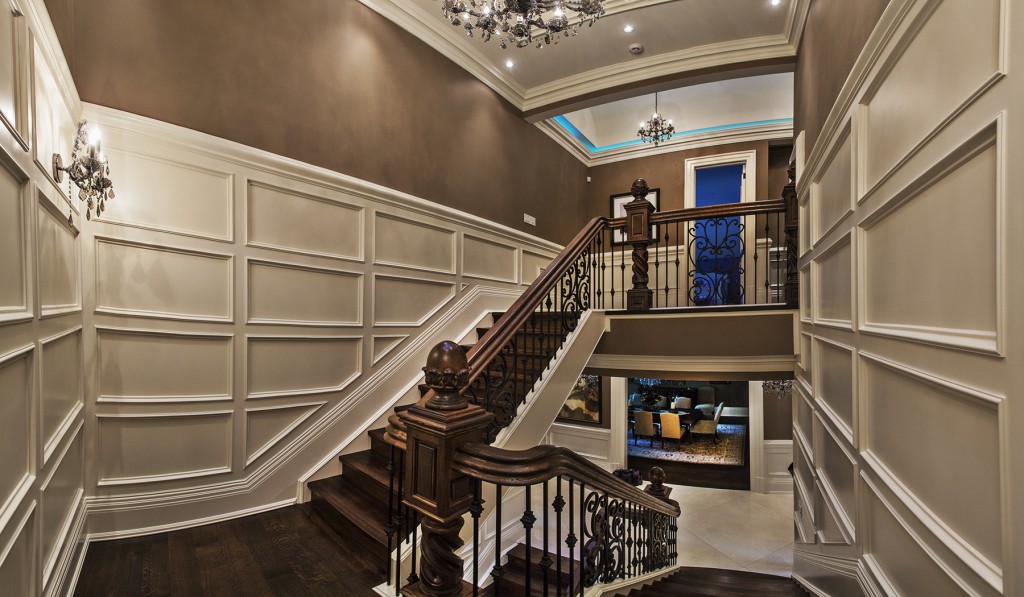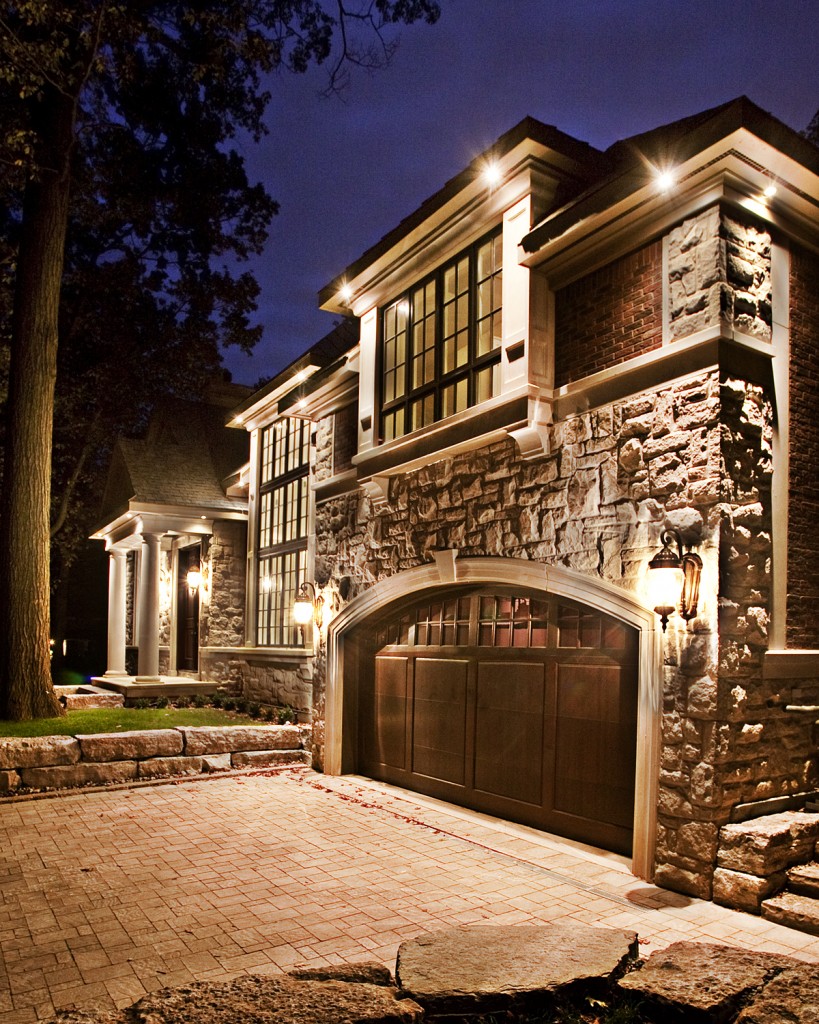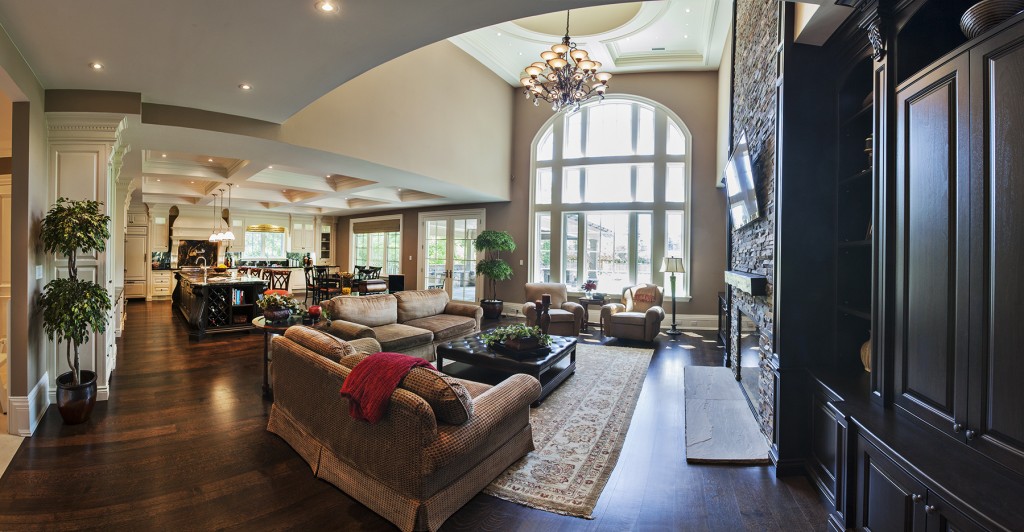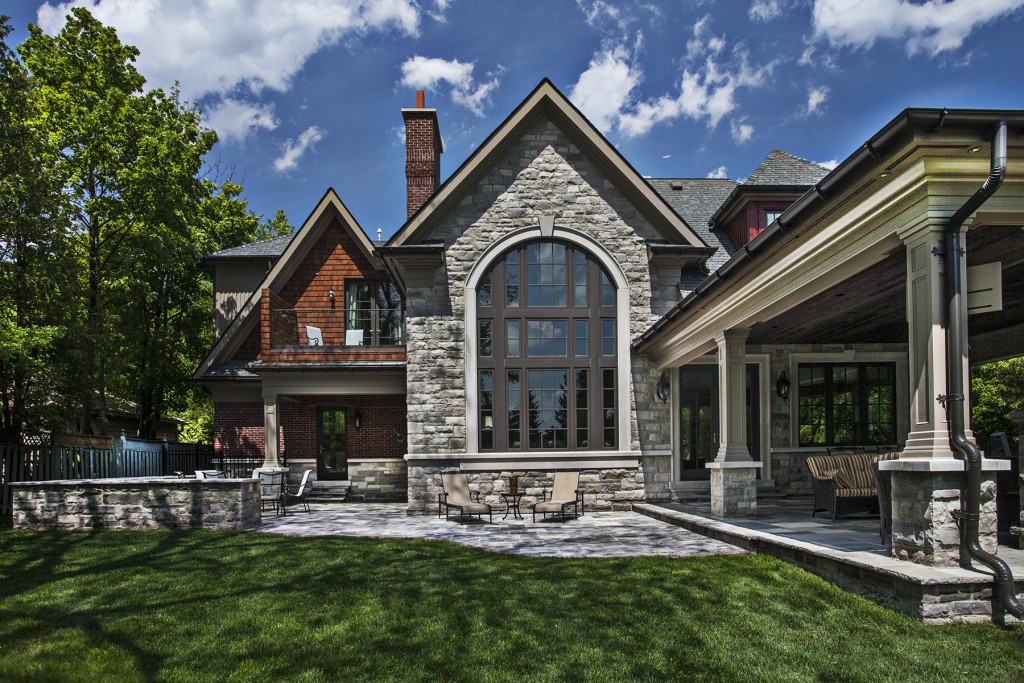
When Michal J. Cerny is designing for Ambassador Fine Custom Homes, he spends a considerable amount of time ensuring that energy efficiencies get the same consideration as sophisticated interior finishes and eye-pleasing exterior finishes.
You have won many awards for your builds, including Best Custom Home in Canada above 4000sf SAM Award by the Canadian Home Builders’ Association and Best Custom Home in GTA Award by the Toronto Home Builders’ Association. What kind of energy efficiencies and green build standards do you incorporate into your designs?
We design about 65 per cent of the homes we build. Naturally, part of that process is constant communication with the client and consulting with them as to what their energy efficiency needs and goals are. For the better part of the past 10 years, we have had most of our clients agree to the extra expense of using 2lb BASF closed cell spray foam insulation throughout the house. We always install HRV’s (Heat Recovery Ventilators), Hepa and Media filters, High Efficiency Furnaces, low flush option toilets, energy rated bathroom fans, LED light bulbs in our pot light fixtures, greywater recovery systems, waterproofing our foundation walls using RubberRWall, in-floor heating, and we encourage the client to purchase energy efficient appliances.

Expand more on your use of 2lb BASF closed cell spray foam insulation in so many of your homes.
We typically fill wall cavities with about 5.5 inches giving a final insulation factor of about R33 once the refrigerant gas has escaped from within the cells. Imagine what a difference this made when before the revised 2012 Ontario Building Code, wall insulation ratings in the GTA were R20. Even with the new 2012 OBC increased ratings between R24 and R27 pending upon efficiency of windows and furnace, we are still delivering a better finished product to the client.
Most people don’t realize how 2lb spray foam insulation actually hardens to the point that it becomes part of the building envelope in more than purely its insulation intended use. It can provide structural enhancement to the house and assists in keeping studs in the same installed condition as compared to being affected by humidity and temperature swings in the home. We took a video of one of our guys trying to hammer out this spray foam and homeowners are in disbelief as to the inherent strength of this product.

Explain why you think more homes should be installing greywater recovery systems.
This is a subject that is a specialty onto itself. I believe this is one of the most underutilized energy efficiency opportunities. At Ambassador we are striving to implement this into all our new home builds, effective 2016.
In very broad strokes, devices capture heat from residential greywater, through a process often called greywater heat recovery. Incoming cold water from the cty, rather than flowing directly into a water heating device, flows first through a heat exchanger where it is pre-warmed by heat from greywater flowing out from such activities as dishwashing, or showering. Typical household devices receiving greywater from a shower can recover up to 60% of the heat that would otherwise go to waste.
On top of that feature, the greywater generated from showers, baths and sinks enters the greywater system and passes over the Recover’s patent pending filter system removing fine particles from the water before it enters a holding tank. Once the shower or bath is finished, the system automatically begins the chlorination cycle followed by cleaning of the filter. The water from the holding tank fills your toilet tanks and for irrigation of your lawn.
As greywater contains fewer pathogens than domestic wastewater, it is generally safer to handle and easier to treat and reuse onsite for toilet flushing, landscape or crop irrigation, and other non-potable uses. As long as your clients are willing to use non toxic and low sodium soap, you can add clotheswashing machines and dishwashers to the systems.
Energy savings plus water conservation equal money saved. Win-win for the client and the environment.

What about the price of LED light bulbs? Don’t they increase the cost of your client’s build?
When we build a home, we are as equally concerned about the lifetime cost of the build as we are with the actual immediate cost of the build. Meaning, are we using materials that will save the client money in the long run by using materials that are maintenance friendly. A simple example is we encourage the client to use stone, brick or limestone, as opposed to stucco, that will fade or crack over time and require maintenance, which will cost the client more money over time.
Going back to the LED example, the electricity used over the lifetime of a single incandescent bulb costs five to 10 times the original purchase price of the bulb itself. What does this really mean in terms of cost to the client? An LED bulb will last some 50,000 hours versus 1,200 hours that a typical incandescent light bulb will. Yes it costs about $36 vs $1.25, but here is the savings – your energy cost over 50,000 hours of usage – LED will cost you about $86 vs incandescent $352. Now use a multiple of some 150 pot lights in a typically-sized home we build. That’s a savings of some $52,000.

You are well-known for having your award-winning homes built with in-floor heating. Can you expand on that?
The best way that I can summarize this is by the feedback we get from our clients. February of this year was the coldest February in our history. We got feedback that our clients’ furnaces worked a few days per week during that month, while the rest of the winter they turned on a handful of times.
It’s thermal comfort. Homes equipped with radiant heat systems have interior environments that are highly favorable to human thermal comfort. Unlike many systems that directly heat the air, radiant floor heating gently warms the surfaces of objects in the room as well as the air itself. The warm surfaces significantly reduce the rate of heat loss from the occupants, allowing most to feel comfortable at room temperatures 1.5 to 2.5 degrees Celsius lower than with other methods of heating.

The system operates quieter, cleaner and reduces fuel usage: Radiant heat systems have a proven record of reduced energy usage relative to other forms of heating, with savings resulting from several factors such as the ability to sustain comfort at lower indoor air temperatures, reduced air temperature stratification, non-pressurization of rooms (which leads to higher rates of air leakage), and the ability to operate with lower water temperatures. Naturally savings will vary from home to home, but industrial statistics show estimates in the 20% to 50% savings range, pending on insulation, efficiency of window and furnace, quality of system installed, geographical area lived in.
On top of this, most systems are installed so that your domestic hot water is heated using the same boiler. Depending upon floor coverage, heat-loss calculations, spacing of radiant tubing, average temperature and flow, a second boiler will be required to accommodate both in-floor heating and domestic hot water heating (in past homes around the 6000sf range start to fall into this consideration). The client saves on energy costs and it’s nearly impossible to run out of hot water – no more family arguments over who used up the hot water.
Michal J. Cerny, PMP, P.GSC, is President and CEO of Ambassador Fine Custom Homes Inc., and has 29 years experience in multi-site project management and operations across North America.
Web / ambassadorfinecustomhomesinc.com